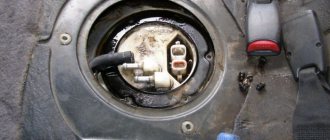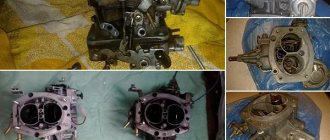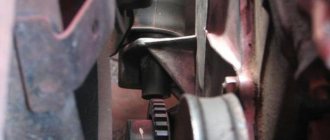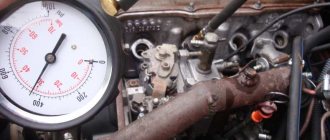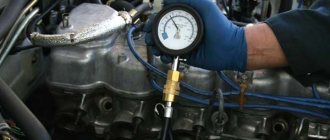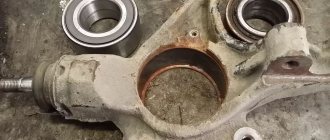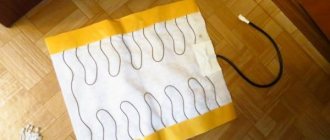In every car, the gas pump is considered one of the important devices that pumps fuel from the tank to the engine. The main thing is that it functions smoothly for good engine performance.
When checking the pump, it is necessary to determine the pressure. As a rule, the pressure of a submersible electric fuel pump is 2-4.5 bar (depending on the brand of the machine). Some engines reach 6 bar. Checking the pressure is not difficult, you just need to connect the pressure gauge to the car. The pump is also checked for productivity and the amount of current consumed.
How does a fuel pump work?
The main function of the gas pump is to transfer fuel from the tank to the engine. In injection engines, the fuel pump is connected to the fuel rail, and in carburetor engines - to the carburetor. Moreover, it is necessary not only to pump fuel, but also to provide a specific pressure.
Very high pressure usually leads to excessive enrichment of the mixture, as well as huge fuel consumption. And too low pressure leads to a decrease in the mixture, as well as a decrease in power. Both the 1st and 2nd cases negatively affect the life of the motor. That is, the fact that the pump pumps gasoline does not confirm its full serviceability.
Features of the injection power system
The tasks of fuel pumps in carburetor and injection engines are slightly different. While in a carburettor engine it is important to deliver gasoline to the carburetor, in the case of an injection system this is not enough. The gasoline pump must not only pump fuel from the reservoir into the ramp, but also to obtain specific pressure, without which the engine simply does not move.
Access to the petrol pump in injection cars is also difficult because in the latest cars it is installed with the fuel cable and particulate filter directly in the fuel tank. This complicates the diagnosis, repair and maintenance of the entire fuel module, but simplifies the pump design since the gasoline itself is lubricated and cooled. But this often leads to devices.
Difficulties with fuel supply - common symptoms
Failures of the fuel supply system are conventionally divided into 2 groups:
- The combustible composition does not enter the cylinders at all.
- Fuel flows intermittently or under low pressure.
In the first case, the engine cannot start and does not engage the starter during rotation, i.e. it does not work. In such a situation, it is much easier to determine the cause of the malfunction.
If little gasoline enters the cylinders, the following symptoms occur:
- turning on the power device “when cold” is too difficult, the engine seizes, “sneezes”, and starts after 3–10 attempts;
- The idle speed is unstable, the engine “troubles”;
- active acceleration becomes unrealistic - sudden opening of the throttle causes a prolonged dip, as well as deceleration;
- if the driver releases the accelerator pedal, the engine usually quiets down;
- The car has difficulty climbing hills and also accelerates slowly when fully loaded.
The cause of the above phenomena may be a breakdown of the fuel pump or other system components. In addition, the main features are almost the same. To perform a clear diagnosis, you need to know how the power supply structure of the machine works.
Purpose and principle of operation of the fuel pump
The fuel pump is designed to pump fuel from one point to another. In a car, the role of the first point is played by a fuel reservoir - the tank, and the second - by the engine, where the pumping takes place. This process occurs at a certain pressure, which is maintained by the pump reducer, which is a very important point.
Fuel pump diagram
Fuel pumps are divided into 2 types according to the type of drive: electric and mechanical. Inside the first there is an electric motor with a mini-pump, which operates from the mains and uninterruptedly pumps fuel into the engine. The second type is becoming increasingly rare, as it is installed on carburetor cars, and operates due to the reciprocating movement of the lever.
Fuel pump diagram
The gasoline pump does not pump: reasons
If the gasoline pressure becomes lower than possible and the pump stops functioning, then it is necessary to understand why the pump does not pump fuel. If there is no hum in the fuel pump, i.e. it does not turn on when the ignition is turned on:
- You need to check the 12 Volt power supply, as well as the ground on the pump chip. If the relay does not work, then you need to install an electronic control unit “brains”. If there is no voltage, then the cause should be found and eliminated in the electrical circuit of the machine.
- Then, if there is voltage and ground, you need to check whether the wires in the fuel pump are damaged. To do this you need to remove it from the tank. On VAZ modules, the chip in the pump housing often burns out. Then you will need to replace the chip and the upper connector on the module body.
- If everything is fine here, but the motor does not work, then connect 12 volts from the battery to the module and also check the hum of the pump. If the pump does not function, this means that it is broken and the pump motor needs to be replaced.
And if the fuel pump is functioning, but does not pump fuel, then you need to check:
- Fuel pressure in the rail.
- Clogging of pipelines, fine and coarse filters.
- Fuel pressure stabilizer for functionality. It is located on the ramp or in the fuel pump module (in the tank).
- A frequent cause of breakdown is water in the tank, which turns into ice in winter, so the pump functions, but does not provide the necessary pressure.
Preliminary checks
Before checking your fuel pump, review this checklist. This includes some obvious things and often forgotten common maintenance problems that can turn into false diagnoses.
- Check for fuel in the tank. If the engine turns over but does not start, make sure there is actually fuel in the tank.
- Listen to the noise of the fuel pump. You can usually do this test yourself from inside the car. When you turn the ignition key to the ON position (engine off), you will hear the fuel pump come to life for approximately 2 seconds. If you cannot hear the pump running, seek help from an assistant and follow these steps:
- Remove the fuel tank cap.
- Place your ear close to your throat.
- Have an assistant turn the ignition key to the ON position, but do not start the engine.
- You should hear a whirring sound coming from the tank for about two seconds. This is the sound of the fuel pump turning on. This means the pump is receiving power and responding.
- If you do not hear this sound, but the engine starts when you try to start it, there may be a problem with the fuel pump electrical circuit. Check the pump fuse, fuel pump relay and, if necessary, wiring and other related sensors that the engine control module (vehicle ECM) relies on to turn on the fuel pump, such as the camshaft position sensor.
- Check the car's computer for stored diagnostic trouble codes (DTCs) in the computer that may indicate the direction of the problem.
- If you think there is an electrical problem and the fuel pump fuse is good, try switching the fuel pump relay with another similar relay in your vehicle and try starting the engine.
- On some vehicle models, insufficient engine oil pressure prevents the engine from starting to prevent engine damage. Check all stored DTCs. If necessary, the vehicle repair manual for your specific vehicle make and model will help you perform this check.
- Make sure the timing belt is in good order. If the engine turns over but does not start and the engine is using the timing belt, check that the belt is still in place or not loose. On average, a timing belt has a service life of about five years. On some models, checking the timing belt is a simple procedure. By removing the cover or pulling it slightly, make sure the belt is in place. If so, have a helper crank the engine while you watch the belt. Make sure the belt moves smoothly.
- Check if the fuel filter is clogged. Have you changed the fuel filter according to your car manufacturer's service schedule? Check the service interval for this filter in your vehicle's owner's manual or vehicle repair manual. Replace the filter if necessary to ensure that you are not dealing with a fuel filter that is not allowing fuel into the engine.
- Check the vacuum line to the fuel pressure regulator (FPR). Disconnect the vacuum line from the fuel pressure regulator (FPR). This is a small metal cylinder connected to the fuel rail. Make sure that the vacuum line is free of fuel and that it is completely dry (if possible, perform this check with the engine idling). If the inside of the vacuum hose is wet, it is sucking fuel from the pressure regulator because the diaphragm is torn. Replace the fuel pressure regulator.
We recommend reading: Why does a turbine drive oil into the intercooler?
Fuel pressure regulator on the fuel rail (bottom assembly).
- Make sure there is fuel in the fuel lines. On EFI models you can do this by pressing the Schrader valve or "test port". You will find a valve somewhere along the fuel rail that holds the fuel injectors in place. Cover the valve with a rag and use a small screwdriver to press down on the valve. Use a rag to catch any leaking or splashing fuel. If there is fuel in the line, this simply confirms that the fuel pump is delivering fuel, although not necessarily in the right amount.
- On throttle body injection (TBI) models, you can see fuel being sprayed into the throttle body by removing the air filter housing and observing the injector while an assistant starts the engine.
- If your system does not have a Schrader valve and the engine will not start, remove the fuel pump fuse and crank the engine for a few seconds. Disconnect the fuel line from the fuel rail and route the end of the line into a fuel container (if it is a steel line, you can connect a short length of hose to the line). Turn the key to the ON position or crank the engine. If the pump is delivering fuel, it is working, but this does not confirm that the pump is delivering enough fuel, although if the pump is not delivering fuel, you may have a clog, a restriction in the fuel line, a problem with the fuel pump electrical circuit, or a faulty pump.
Tip 1: When the engine stalls after a few minutes of running
If the engine stalls within a few minutes of starting and does not start until the engine cools, perform the following check as soon as the engine stalls:
- Open the hood and pull out the spark plug wire.
- Grasp the wire using insulated-handled pliers.
- Position the tip of the wire about a half inch to an inch from the bare metal motor or metal bracket (a grounded location is required).
- Have a helper crank the engine or use the remote starter switch.
- Is there a spark coming from the end of the wire?
- If there is no spark, you may have a bad ignition coil. If it sparks, you may have a bad fuel pump.
Tip 2: Check the inertia switch
Ford vehicles - and some others - use an inertia switch to shut off the fuel pump when the vehicle is involved in a collision. But other events can trigger the switch:
* Hit the bumper
* Driving through a pothole
* Even a small bumper bump in a parking lot
So check your vehicle's owner's manual or vehicle repair manual to find out where the switch is located and how to reset it if necessary.
Checking the serviceability of the pump on the injector
If you hear a slight noise when turning the ignition key, then this is how the fuel pump functions. By pushing up the fuel, it creates pressure in the structure. If, when trying to start, there are no similar symptoms of the fuel pump, then we can assume a breakdown of the electrics, the fuel pump or its separate elements.
The main causes of fuel injection pump malfunction
High pressure fuel pump, used to power diesel engines and gasoline engines of the GDI type. Usually it has a mechanical drive and very high outlet pressure, about 1000 atmospheres or more.
Fuel injection pump malfunctions are similar to problems with electric pumps and arise due to low-quality fuel and natural wear. The main difference is the significantly higher price and complexity of the design. It is possible to carry out repairs on your own if you need to replace small parts, such as an O-ring or fuel pump gasket.
How to check a fuel pump: techniques, methods, breakdowns
Modern cars are equipped with an electronic engine control system. Gasoline is injected into the combustion chamber using nozzles. An electric pump is provided to supply fuel. Fuel from the tank at a specific pressure of approximately 3-4 atm enters the nozzles and is distributed over the valve plate or directly onto the piston.
Most often, a submersible centrifugal pump is used. As a module, it is placed directly into the tank. There are also mounted fuel pumps, but they are not very popular.
Car owners may encounter a situation where the car does not start, pulls weakly, or drives irregularly. The reason for this, for example, could be a pump failure. It stops providing the necessary pressure to the fuel structure, and the nozzle sprays gasoline poorly, and the composition in the combustion chamber will not ignite.
The fuel pump needs to measure the pressure in the rail or near the pump. Usually the ramp has a separate fitting for a pressure gauge. In addition, it is possible to measure the pressure with your own hands using a pressure gauge at home, if one is available.
Difficulties in this procedure do not appear if there is a pipe in the ramp. And if it is missing, then you need to find the connection area in the fuel pipeline, and also install the device in the gap in the fuel supply hose, for which you will need a tee.
It is pointless to check the pressure by pressing the nipple in the ramp, because due to fuel vapors, as well as heating, you may mistakenly think that there is pressure. If there are no sounds from the pump, then you need to check the power using a multimeter or test lamp. Measuring rail pressure is included in the cost of checking the engine. It would be wiser to check the entire fuel structure and also eliminate the violations on site.
When should you check your fuel pump?
It is necessary to check all potentially faulty components one by one, and the fuel pump first.
Problems when starting and running the engine are not always associated with the fuel pump. Sometimes the signs of a fuel pump breakdown are the same as those of a faulty fuel pressure regulator , injectors or jets, spark plugs and high-voltage wiring. Even experienced specialists who know by heart all the signs of a “dying” pump cannot unambiguously determine the type and cause of the breakdown the first time, and it is necessary to check all potentially faulty components one by one. In this case, the fuel pump is usually checked first. In this case, there are two types of malfunction - the fuel pump does not work at all or does not produce the required pressure. In the first case, the malfunction can be recognized by ear, since it should start when the ignition is turned on. In the second case, you need to know how to check the pressure of the fuel pump. Here you need to use a special pressure gauge. We list the main symptoms of a fuel pump malfunction:
- the engine does not start;
- the engine is unstable;
- the engine lacks traction during sharp acceleration;
- The engine lacks traction at low speeds.
Preventing fuel pump malfunctions
The best prevention for long service life of the fuel pump is its careful and correct use and, in addition, following the following rules:
- Absolutely all scheduled vehicle repairs must be accompanied by the replacement of all fuel filters.
- You should check the fuel tank, that is, make sure the tank and filters are clean; and check the quality of the gasoline being filled (the absence of water, sand and other impurities in it).
- Eliminate the possibility of water entering the fuel tank.
- Protect the pump housing from mechanical stress, which may cause dents and cracks to appear on the machine, which contribute to the formation of corrosion processes.
The fuel pump, like every other device, gradually wears out and stops functioning. If you suspect that the pump is faulty, you must immediately diagnose it.
Signs of a faulty fuel pump
Although mechanical and electronic pumps operate on different principles, symptoms of failure are similar to both types of pumps. If you notice any of the typical symptoms of fuel pump failure while driving, you may need to have the pump checked and the fuel replaced.
You may have a fuel pump failure problem if your car jerks at high speeds
If you notice with speed, you will notice that the TUGGER engine or car is not bothering, you may have a damaged fuel pump. This problem occurs when the fuel pump does not provide a smooth flow of fuel to the engine. Periodically, the engine only accepts air while it is waiting to receive fuel. This disruption in fuel flow causes the engine to miss several power surges, causing it to jerk.
In the initial phase of failure, this symptom of a damaged gasoline pump may remain for a minute until the engine returns to normal operation. Some drivers may confuse this sign with the "dirty gas effect", but modern fuel standards make it more common to trigger the fuel pump.
The fuel pump may be faulty if you lose power when accelerating
If you notice that the car frequently loses power when you try to accelerate from the bus stop, this is another sign that the fuel pump may be damaged. Acceleration requires more fuel, which forces the gasoline pump to work harder. If the pump is damaged, it will not be able to meet the increased demand and use the motor. If your car behaves as if it has stopped, you may need to re-set the pump review.
Additionally, loss of power in a vehicle can be caused by a clogged fuel filter, in which case the fuel filter must be completely changed or replaced.
Loss of power when lifting or towing a load
Some types of driving, such as climbing or towing, place additional stress on the engine and require more fuel to achieve the same performance. These difficult situations increase stress on the pump. If you find problems with your used pump, it may not be able to maintain a constant flow of fuel to the engine, resulting in loss of power.
